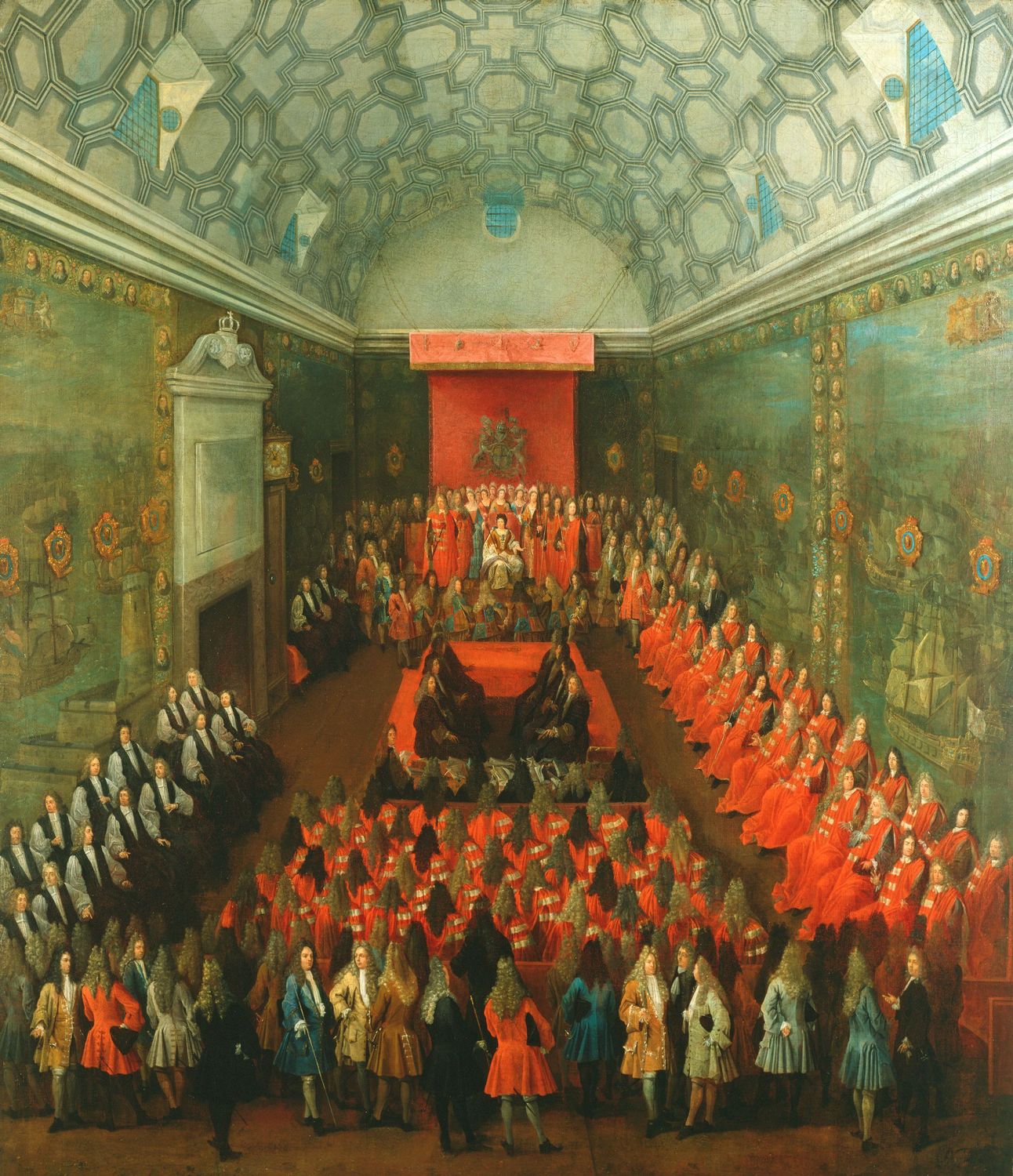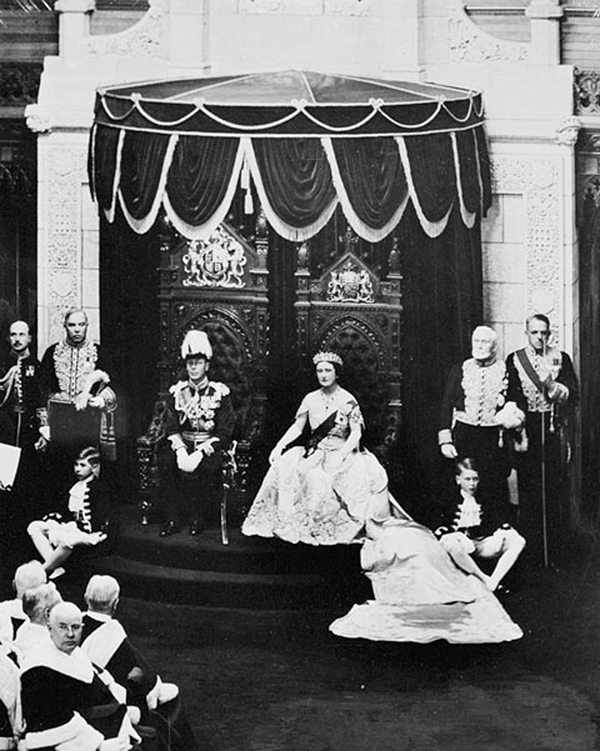|
General Synod Of The Church Of England
The General Synod is the tricameral deliberative and legislative organ of the Church of England. The synod was instituted in 1970, replacing the Church Assembly, and is the culmination of a process of rediscovering self-government for the Church of England that had started in the 1850s. Church Assembly: 1919 to 1970 Before 1919, any change to the church's worship or governance had to be by act of Parliament, which resulted in little being done. In 1919, the Convocations of the provinces of Canterbury and York adopted the constitution of the National Church Assembly proposed by the Representative Church Council and presented it to the king as an appendix to an address. The constitution as proposed to the sovereign was then recognised as already existing in the Church of England Assembly (Powers) Act 1919 ( 9 & 10 Geo. 5. c. 76) thus obtaining legal recognition of the assembly without implying that it had been created by Parliament or that Parliament could modify its constitut ... [...More Info...] [...Related Items...] OR: [Wikipedia] [Google] [Baidu] |
Tricameral
Tricameralism is the practice of having three legislative or parliamentary chambers. It is contrasted with unicameralism and bicameralism, which are both far more common. No national government is currently organized along tricameral lines. The word could describe the ''Ancien Régime'' era French Estates-General, though similar semantic arguments are applied since it sometimes met in joint session. The South African Parliament established under the apartheid regime's 1983 constitution was tricameral, as was the Chinese 1947 Constitution and Simón Bolívar's model state. A common feature in these bodies, which also casts some doubt on the appropriateness of the name, is that in several cases one of the three legislatures is not principally concerned with legislating. There are different varieties of tricameralism. A disputed type of tricameralism is one where there are two legislative bodies, elected or appointed separately, and a third consisting of all members of the tw ... [...More Info...] [...Related Items...] OR: [Wikipedia] [Google] [Baidu] |
Bishop Of Dover
The Bishop of Dover is an episcopal title used by a suffragan bishop of the Church of England Diocese of Canterbury, England. The title takes its name after the town of Dover in Kent. The Bishop of Dover holds the additional title of "Bishop in Canterbury" and is empowered to act almost as if the Bishop of Dover were the diocesan bishop of Canterbury, since the actual diocesan bishop (the Archbishop of Canterbury) is based at Lambeth Palace in London, and thus is frequently away from the diocese, fulfilling national and international duties. Among other things, this gives the Bishop of Dover an ''ex officio'' seat in the church's General Synod. There is another suffragan, the Bishop of Maidstone, who has different responsibilities. The role of the Bishop of Dover in the Diocese of Canterbury is comparable to that of the Cardinal Vicar in the Roman Catholic Diocese of Rome, who exercises most functions that the Pope, the Bishop of Rome, formally has in his own diocese. The arra ... [...More Info...] [...Related Items...] OR: [Wikipedia] [Google] [Baidu] |
Diocese
In Ecclesiastical polity, church governance, a diocese or bishopric is the ecclesiastical district under the jurisdiction of a bishop. History In the later organization of the Roman Empire, the increasingly subdivided Roman province, provinces were administratively associated in a larger unit, the Roman diocese, diocese (Latin ''dioecesis'', from the Greek language, Greek term διοίκησις, meaning "administration"). Christianity was given legal status in 313 with the Edict of Milan. Churches began to organize themselves into Roman diocese, dioceses based on the Roman diocese, civil dioceses, not on the larger regional imperial districts. These dioceses were often smaller than the Roman province, provinces. Christianity was declared the Empire's State church of the Roman Empire, official religion by Theodosius I in 380. Constantine the Great, Constantine I in 318 gave litigants the right to have court cases transferred from the civil courts to the bishops. This situa ... [...More Info...] [...Related Items...] OR: [Wikipedia] [Google] [Baidu] |
House Of Laity
The House of Laity is the lower house in the tricameral General Synod of the Church of England legislature. They are responsible for representing the laity of the Church of England in the legislature. They are indirectly elected every 5 years by members on the Church of England's electoral roll via the representatives on the Diocesan Synods. History The concept of giving the laity a voice in the governance of the Church of England dated back to the English Reformation when King Henry VIII of England broke the Church of England away from the Roman Catholic Church. The doctrine of lay supremacy was one of the rationales for the breakaway. Initially the Members of Parliament in the House of Commons were used as the lay representatives as all Church of England legislature had to go through Parliament. However during the 20th century, Parliament focussed little time on Church of England matters. When the Church Assembly (predecessor to the General Synod) was established, it was deci ... [...More Info...] [...Related Items...] OR: [Wikipedia] [Google] [Baidu] |
House Of Clergy
The House of Clergy is the middle house in the tricameral Church of England General Synod legislature. It consists of representatives of the ordained clergy of the Church of England. Composition The House of Clergy comprises ordained members of the Church of England below the rank of bishop. Members are elected by their fellow clergy to represent their individual Dioceses at their regional Diocesan Synod. Members are obliged to retire when they reach 70. The House of Clergy, like the House of Bishops and House of Laity, hold veto power over all proposed Church of England Measures and reports. An example of this was when the House of Clergy vetoed a report on homosexuals and same-sex unions. It comprises the Lower Houses of the Convocations of Canterbury and York. Election Elections to the House of Clergy take place every five years with by-elections held to fill any vacancies that may arise between elections. In practice the members of the House of Clergy are identical to ... [...More Info...] [...Related Items...] OR: [Wikipedia] [Google] [Baidu] |
House Of Bishops (Church Of England)
The House of Bishops is the upper house of the tricameral Church of England General Synod legislature. It consists of all 42 Diocesan Bishops of the Church of England's Provinces of Province of Canterbury, Canterbury and Province of York, York as well as nine elected suffragan bishops. This is not to be confused with the Lords Spiritual, the most senior bishops in the Church of England sitting in the House of Lords ''ex officio''. Duties and membership The House of Bishops holds a veto power in the General Synod along with the House of Clergy and the House of Laity. An example of this was when the house vetoed a proposal allowing same-sex couples to receive blessings in Church of England parish churches. The House of Bishops also have distinct responsibilities in the General Synod. The House of Bishops meets twice in between Synod sessions. Any measure affecting Church of England services or administration of the sacraments also require final approval from the House of Bishops i ... [...More Info...] [...Related Items...] OR: [Wikipedia] [Google] [Baidu] |
Tricameral
Tricameralism is the practice of having three legislative or parliamentary chambers. It is contrasted with unicameralism and bicameralism, which are both far more common. No national government is currently organized along tricameral lines. The word could describe the ''Ancien Régime'' era French Estates-General, though similar semantic arguments are applied since it sometimes met in joint session. The South African Parliament established under the apartheid regime's 1983 constitution was tricameral, as was the Chinese 1947 Constitution and Simón Bolívar's model state. A common feature in these bodies, which also casts some doubt on the appropriateness of the name, is that in several cases one of the three legislatures is not principally concerned with legislating. There are different varieties of tricameralism. A disputed type of tricameralism is one where there are two legislative bodies, elected or appointed separately, and a third consisting of all members of the tw ... [...More Info...] [...Related Items...] OR: [Wikipedia] [Google] [Baidu] |
Synodical Government Measure 1969
The Synodical Government Measure 1969 No. 2 is a Church of England measure passed by the National Assembly of the Church of England replacing the National Assembly with the General Synod of the Church of England. Background In 1919, the Parliament of the United Kingdom passed an act establishing the National Assembly of the Church of England. After the measure was passed, the previous state of arrangements was referred to as "paralysis" in the Ecclesiastical Law Journal. Until this measure passed there were "many complications" with having the National Assembly and the Convocations side-by-side, and it was deemed that the laity had too little share of power in the National Assembly. Provisions Most of the powers of the Convocations of York and Canterbury were transferred to the General Synod, consisting of: *a House of Laity *a House of Clergy *a House of Bishops The measure established deanery synods which would be the lowest rung of the Church's hierarchy. To be elig ... [...More Info...] [...Related Items...] OR: [Wikipedia] [Google] [Baidu] |
House Of Lords
The House of Lords is the upper house of the Parliament of the United Kingdom. Like the lower house, the House of Commons of the United Kingdom, House of Commons, it meets in the Palace of Westminster in London, England. One of the oldest extant institutions in the world, its origins lie in the early 11th century and the emergence of bicameralism in the 13th century. In contrast to the House of Commons, membership of the Lords is not generally acquired by Elections in the United Kingdom, election. Most members are Life peer, appointed for life, on either a political or non-political basis. House of Lords Act 1999, Hereditary membership was limited in 1999 to 92 List of excepted hereditary peers, excepted hereditary peers: 90 elected through By-elections to the House of Lords, internal by-elections, plus the Earl Marshal and Lord Great Chamberlain as members Ex officio member, ''ex officio''. No members directly inherit their seats any longer. The House of Lords also includes ... [...More Info...] [...Related Items...] OR: [Wikipedia] [Google] [Baidu] |
Royal Assent
Royal assent is the method by which a monarch formally approves an act of the legislature, either directly or through an official acting on the monarch's behalf. In some jurisdictions, royal assent is equivalent to promulgation, while in others that is a separate step. Under a modern constitutional monarchy, royal assent is considered little more than a formality. Even in nations such as the United Kingdom, Norway, the Netherlands, Liechtenstein and Monaco which still, in theory, permit their monarch to withhold assent to laws, the monarch almost never does so, except in a dire political emergency or on advice of government. While the power to veto by withholding royal assent was once exercised often by European monarchs, such an occurrence has been very rare since the eighteenth century. Royal assent is typically associated with elaborate ceremony. In the United Kingdom the Sovereign may appear personally in the House of Lords or may appoint Lords Commissioners, who anno ... [...More Info...] [...Related Items...] OR: [Wikipedia] [Google] [Baidu] |





